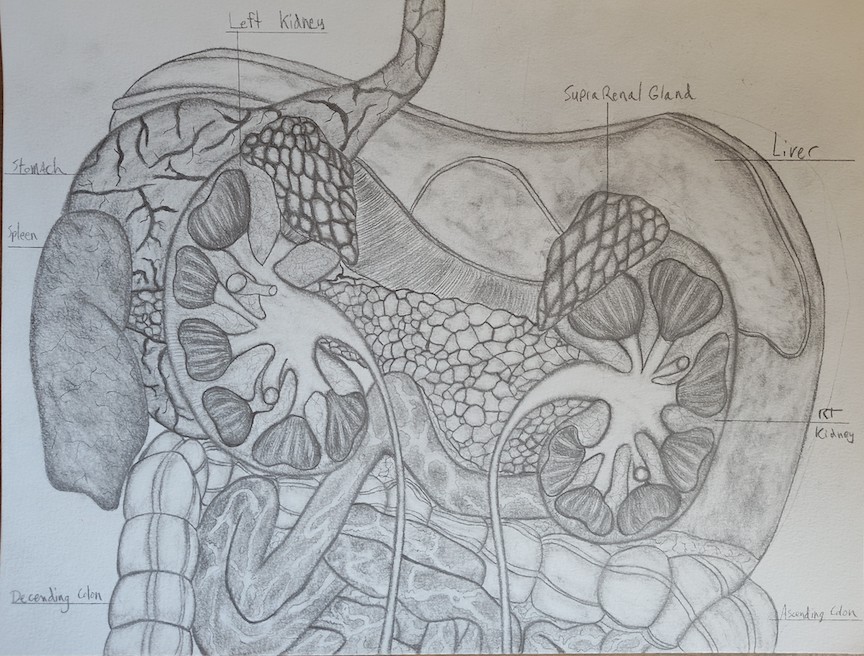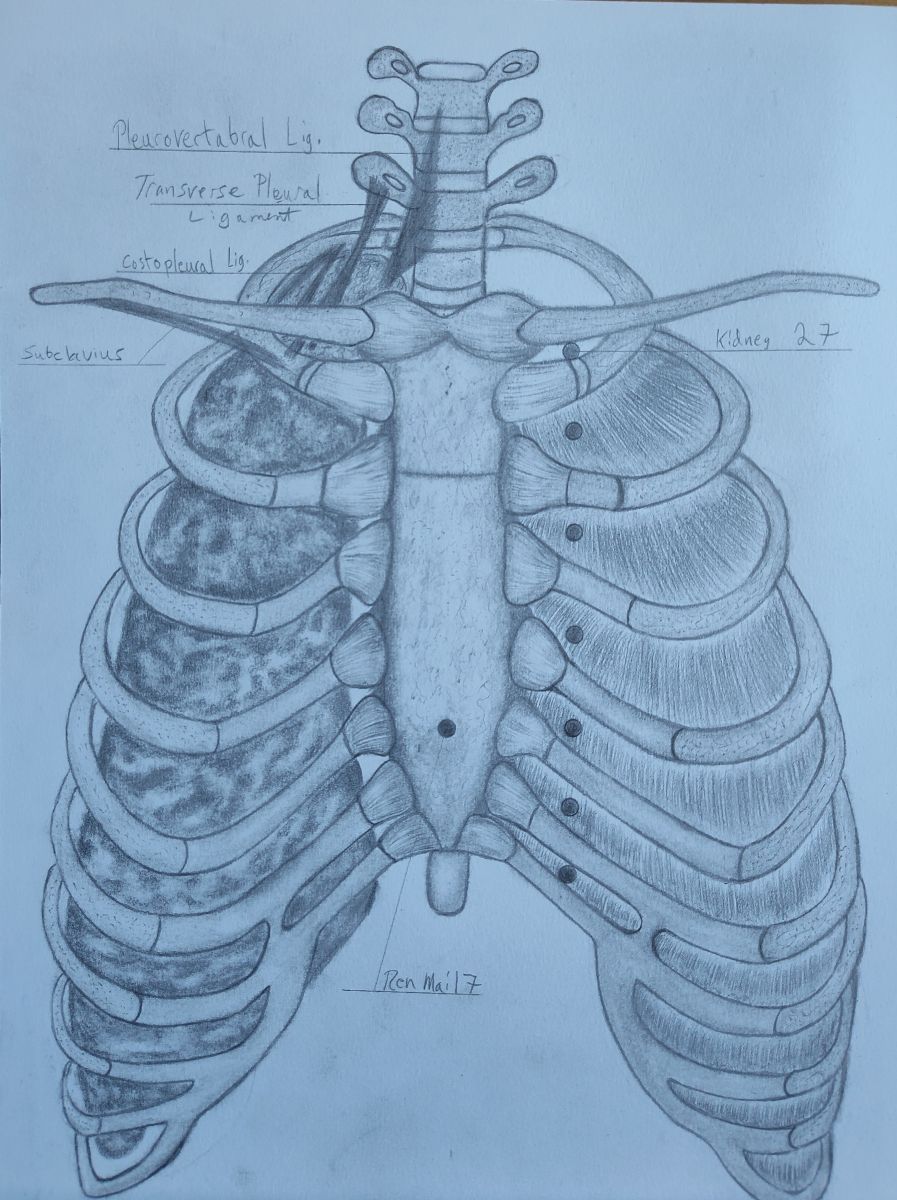Kidney Anatomy Review
Continuing on my anatomy review, this time I’ve draw the Kidneys and how they relate to the rest of the organs. It was difficult to choose a good perspective, because there is so much surrounding and attaching to the kidneys and the ligaments that attach to everything else were so varied that I had to leave them out of the picture.
But as it relates mainly to my work - in terms of what often happens when kidneys become disfunctional or out of place, a few things can happen:
1. Most common when there are issues with the kidneys, they often can express those issues with tension or pain in the low back. In severe cases, kidneys can fall into a Ptosis, which is when an organ drops out of its normal position. Anytime any organ gets out of place, it usually starts to press and stress other structures around it and usually ends up with a lot of extra dense tissue trying to stabilize the new position. This can also stress the other organs that kidneys are attached to and cause them to not function properly.
2. The kidneys can end up pressing on nerves which and often radiate downward into the hips or legs - as pain or ‘’pins and needles’’. Also the kidneys can also press on the Psoas muscles in the hip and low back, which can cause some chronic tension/pain.
3. The function of the kidneys themselves could be compromised: so less water filtration, less hormone and blood pressure regulation, less red blood cell production.
I’ve found that working the kidneys gives my clients a greater sense of Left/Right balance, that wasn’t there before. Treatments involve going through the abdomen, working in the deeper layers, as the kidneys are deep to all the other organs on top - Small intestine, stomach, liver - and then it’s only really possible to feel the lower portion of the kidneys. Working with the breath and active leg tension/relaxation work (Psoas), while the knees are bent with feet flat on the table, it’s possible to gently wake up the kidneys and increase its natural movement, where it takes the stress of the other areas its affecting.
One thing I was thinking about in this review, was that in TCM the kidneys play a very important role in a person’s longevity. And that actually between the kidneys is a very important energy center, called Ming Men - which is kind of like a reservoir of our “Essence” , which is kind of like the pilot light of our energy throughout our lives. Looking anatomically at what is between the kidneys (not shown in the drawing), we have the main arterial trunk - the Aorta, the main venous trunk - the Vena Cava, and the main lymphatic vessel - the Cisterna Chili. Some very important structures also.

Thorax Anatomy Review
Reviewing some of the the anatomy that I’ve learned over the last 2-3 years lately and this one is a drawing of the thorax, specifically illustrating the attachments (connective tissue ligaments) which suspend and stabilize the Pericardium (the hearts’ outer layer).
I still find it really interesting that one these attachments (the top one - the verebropericardial ligament) goes all the way up from the pericardium up to C7 to T4 - and sometimes as high as C4. This kind of reminds me that tension in the neck can come from lots of places, if for instance this ligament is tight for some reason, it could easily be pulling on the neck and causing pain or restricted movement.
Same can be said for the other two ligaments that attach to the sternum, except that the tension pattern - when these ligaments are tight, tend to create tightness in the chest. The superior sternopericardial ligament attaches from the pericardium to the manubirum (just below the throat). The Inferior sternopericardial ligament attaches to the lower portion of the sternum.
I find it also really interesting that there is an acupressure point on both areas where the ligaments attach, and both are really great at releasing tension in the chest and regulating heart and lung function. Ren Mai 17 has been a favorite point of mine to use for ust for these purposes. It’s really great to understand the mechanism behind it now - pressing on these points can help relax these ligaments.
When I took the Visceral Manipulation Thorax class, we learned some great chest compressions for the ligaments and the Lungs, which besides relaxing the ligaments, most of my clients with anxiety, remark at how calming these compressions are - really dissolving their sense of anxiety.
And at the very bottom of the pericardium is the Anterior Phrenopericardial lig.(note I mistakenly titled it the phrenocardial lig. on the drawing). This is the attachment from the pericardium to the diaphragm and logically when this gets tight, breathing problems can occur.
If you are interested in any of this work, please get in touch!



